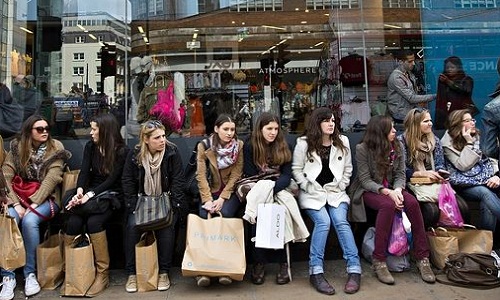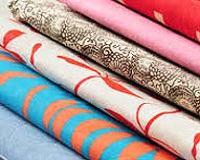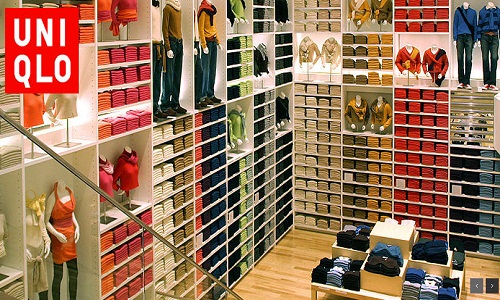FW
With its volume increasing by 10 per cent to 1.2 million tonnes, Bangladesh is expected to remain the world's top importer of cotton in 2016-17. Following it is Vietnam that imports 1.1 million tonnes a 15 per cent rise, says the International Cotton Advisory Committee (ICAC), a platform of governments of cotton producing and consuming countries.
In a release, the ICAC has said in 2016-17, world cotton consumption would presumably remain unchanged from 2015-16 at 23.8 million tones. But it is projected to exceed production by 1.3 million tonnes. Consumption was 23.78 million tonnes in 2015-16 and 24.20 million tonnes in 2014-15. Production was 21.10 million tonnes in 2015-16 and 26.20 million tonnes in 2014/15.
As a result, world stocks are projected to decline by 7.0 per cent to 18.1 million tonnes which was 19.37 million in 2015-16 and 22.31 million tonnes in 2014-15. Although China's consumption is forecast to decline for the seventh consecutive season by 2.0 per cent to 7.2 million tonnes, it will continue to be the world's largest consumer of cotton, the release said.
It also said although domestic cotton prices have fallen since China implemented its direct production subsidy policy (they remain above levels on the international market and well above polyester prices). India's cotton consumption is projected to remain stable at 5.2 million tonnes as mills increase the share of other fibers in cotton-blended yarns. Use of the commodity by Pakistan's mills is expected to escalate by 23,000 tonnes to 2.3 million tonnes assuming that the energy situation improves.
Exports from the United States are projected to increase by 26 per cent to 2.5 million tonnes while exports from India, the second largest exporter, is forecast to fall by 35 per cent to 8,20,000 tonnes. In 2016-17, the world cotton area is forecast to fall by 1 per cent to 30 million hectares, which is the smallest amount of area under cotton since 2009-10, when the planted area reached 29.7 million hectares.
A permanent tripartite consultative council will be formed in Bangladesh to address labor-related issues. The council will have representatives from workers in the readymade garment sector and factory owners from compliant factories and will consist of the government, representatives of the apparel sector and workers.
It aims at a proper system and regular dialogues among the government, workers and owners’ representatives for keeping sound and harmonious industrial relations and promptly responding during crisis situations and also play a pro-active role in this regard. It will aim at mitigating problems, especially industrial unrest, and thus reduce the distance between employers and employees.
The belief is that a permanent tripartite consultative council for the readymade garment sector will take it forward and act as a bridge between employers and employees to reduce the trust deficit. It is also seen as enabling the garment sector to make workers its partners in its journey toward the achievement of the ambitious 50 billion dollar garment export target by 2021.
Most garment workers are women and women want adequate representation in the proposed committee. The council may include representatives of global apparel brands since they are also part of the supply chain. Bangladesh is the second-largest apparel exporter in the world.
The 2016 Global Denim Awards will take place in Amsterdam on October 26. About 11 designers will present their looks to a panel of international denim experts. Among the 2016 participants are Marina van Dieren and Christina Albrecht, known for their gender neutral designs. They create new surface designs, weaving and manipulation techniques, while working form a zero waste perspective.
Marius Op’t Enyde launched his own London-based menswear brand, Marius Petrus, in 2012. The designer is known for graphic shapes, intense colors and high-tech materials. Designers Gianluca Ferracin and Andrea Masato use gender as a study of forms, volumes and lengths to create gender neutral clothing.
Calik is a designer from Turkey who has established her own urban underground brand, highly influenced by music, art history and anthropology. Designer Anbasja Blanken has founded her own trouser line Ala Blanka and Tess Van Zalinge’s debut label links lingerie and outerwear.
Lisa Konno and Karin Vlug run their own respective labels from a boat in Amsterdam’s harbor. The duo collaborated on Collect—a garment that allows multiple interpretations and stylings. The pair embrace a zero-waste philosophy, and construct smart apparel that dodges classic fashion norms. Designer Deniz Gür is known for his minimalistic designs that cater to working women.
"Whether it is Spring/Summer or Autumn/Winter, fashion changes every season and fashionistas across the globe are increasingly becoming obsessed with changing their clothes and style as per the latest offerings from the iconic fast fashion brands. With each new season, garments of the previous collection are becoming redundant thus giving a high to the fashion brands."

Whether it is Spring/Summer or Autumn/Winter, fashion changes every season and fashionistas across the globe are increasingly becoming obsessed with changing their clothes and style as per the latest offerings from the iconic fast fashion brands. With each new season, garments of the previous collection are becoming redundant thus giving a high to the fashion brands.
Today the global fashion industry is worth $1.2 trillion, and more than $250 billion of this is spent annually in the US alone. Fast fashion as a concept is actually a business model that moves designs from the runway to stores quickly to capture current trends and typically includes inexpensive, poorly constructed garments that can be ruined after a couple of trips through the washing machine.

While fast fashion marketers are minting money, the fickleness of trends and the demand for clothing is raising concern amongst brands and consumers about the environmental impact. They are willing to focus on incorporating sustainability into their business models. Brands willing to create sustainable fashion require a two pronged effort. While brands need to make products that minimize any negative impact on the environment, it also improves the working conditions for everyone involved in design and manufacturing.
Environmental hazard of fast fashion
The fashion industry is among the most polluting in the world, with a number of chemicals and water being used produce clothing. Wastewater discharged by mills each year contains harmful chemicals such as formaldehyde, chlorine and heavy metals such as lead and mercury which causes global industrial water pollution. Moreover cotton production use up a significant amount of water resources.
Another worrying aspect of fast fashion industry is the human cost it involves. Garment manufacturing is the third-largest industry in the world, producing about $700 billion annually. However the working conditions of many of the millions of workers employed in garment manufacturing are of great concern. In April 2013 more than 1,100 Bangladeshi workers were killed when the Rana Plaza garment factory collapsed. The year before, 117 people were killed when a fire swept through another factory in Bangladesh.
New sustainable fashion brands emerging globally
Amidst rising concern of for environmen, a new trend is emerging as increasing number of brands are working towards sustainable fashion. In the last few years brands which believe in sustainable fashion, have striving hard to create an antithesis of fast fashion. The Los Angeles based brand Tom Cridland is responsible for the 30 Year T-Shirt, the 30 Year Sweatshirt and the 30 Year Jacket. The founder, Tom Cridland, and its managing director, Deborah Marx strongly disapproves the tendency for once-worn clothing to be discarded. According to them concept is a fun way to promote sustainability while not preaching about environmentalism and clothing manufacturing rights. Celebrities like Leonardo DiCaprio, Rod Stewart and Ben Stiller have come forward to promote the brand.
Several fashion-forward brands are striving to promote the concept clothes can be inexpensive, ethically made and sustainable. Asos Eco Edit Online fashion retailing giant has an exclusive ‘Eco Edit' section that features a wide range of what it says are sustainable clothing, accessories and beauty items, including handcrafted jewelry to up cycled vintage pieces. Another iconic high end designer Stella McCartney is a strong believer of vegan living and the brand doesn’t use any leather or fur in its designs. Patagonia, the brand, which caters to outdoor apparel needs, has also committed to monitoring all stages of production closely to ensure that all products are produced under safe, fair, legal and humane working conditions throughout the supply chain. The quintessential brand for jeans Levi’s has created a collection called Levi's Waste Less,which features clothing made of 20 percent postconsumer waste — specifically, recycled plastic bottles. Three to eight plastics bottle are used per pair of WasteLess jeans.
Many other prominent fast fashion brands like H&M and Zara are also taking up initiatives to cover up the darker side of the fast fashion business.
South Korea’s home-grown brands have been actively seeking opportunities in foreign markets. Samsung C&T’s fashion business is working on a plan to export its women’s apparel brand Kuho and men’s apparel brand Juun. J. The company that aims to earn $90.3 million in sales from Kuho this year expects to double sales by 2020 by entering global markets such as the United States.
Juun J became the first designer in South Korea to be invited to the global men’s apparel fashion show Pitti Uomo held in Italy early this year. Korean fashion group Hyungji in September acquired De Castelbajac, the fashion label launched by French fashion designer Jean-Charles de Castelbajac, a pioneer of the avant-garde who dressed the late Pope John Paul II, Lady Gaga and Madonna. It was one of the biggest merger and acquisition deals Korea’s indigenous fashion brands had ever made since 2000.
Hyungji, well-known for its low- and mid-tier women’s apparel brands such as Crocodile Lady and Chatelaine decided to add the French fashion line-up to its business portfolio in the hope that the deal helps not only to expand its presence in the golf-wear and handbag markets but also enter the markets for home and living goods and men and children’s clothing.
"With textile and apparel export volume of close to $12 billion and a workforce of almost two million people, the Indonesian garment and textile industry has been raising the bar in global textiles market. The Indonesian government has set a target of increasing the nation’s value of textiles exports to $75 billion by 2030. With this, Indonesia’s textile and apparel products would have 5 per cent share in the global market."

With textile and apparel export volume of close to $12 billion and a workforce of almost two million people, the Indonesian garment and textile industry has been raising the bar in global textiles market. The Indonesian government has set a target of increasing the nation’s value of textiles exports to $75 billion by 2030. With this, Indonesia’s textile and apparel products would have 5 per cent share in the global market.
And, there are homegrown designers who are ably pushing this growth. Michelle Tjokrosaputro, Chief Executive, Dan Liris, is the name behind global behemoths like Calvin Klein, Tommy Hilfiger and Marks & Spencer. At the recent Jakarta Fashion Week, she shared her expertise with the next generation of designers. She provides a portfolio of services such as auditing, subsidised courier services, sustainability management, quality control and specialised state-of-the-art machinery. Like her, there are other designers who are pushing the ‘Made in Indonesia’ tag.
‘China Plus One’ strategy

Recent PwC studies reveal Indonesia will become the 5th biggest economy in the world in 12 years’, moving up from 16th place and surpassing the likes of Brazil, Russia and Germany. Anne Patricia Sutanto, Chief Executive, Pan Brother Tex, one of the largest Indonesian manufacturers producing for the likes of Uniqlo, points out there are three massive factories just for the Japanese brand and ASICS shoes. Indonesian apparel manufacturing will play a huge role in the country’s future in the next 20 years. There is no doubt Indonesia with its large population will have a huge influence on both manufacturing and sourcing as well as consumers’ buying. This industry will have a multiplier effect and give a major boost to the economy provided the government is willing to see this labour-intensive industry as pillars of growth. Pan Brothers Tex also has tie-ups with Indonesian retail brands like Salt n Pepper and Zoe Black.
While China undoubtedly remains a powerhouse in the region, Indonesia is benefitting from China’s rising labour costs, prompting companies to diversify in the region by following what’s called a ‘China Plus One’ strategy. Like China, Indonesia has the advantage of a domestic supply of raw materials, an expansive labour force and a big domestic economy that is transitioning steadily from low income to middle income. Unlike China, however, it is integrated into the Association of Southeast Asian Nations (ASEAN).
Besides, manufacturing is becoming increasingly sophisticated with vertical operations in spinning, weaving, printing and garment plants, making them a one-stop destination for international clients. One such example is Java-based Sritex that makes 8 million pieces of apparel a year for bigwigs like Uniqlo, Guess and H&M.
Fast fashion driving growth
Helena Helmersson, H&M’s Global Head of Production, says the advantage of manufacturing in Indonesia is the great mix of fashion, price and sustainability. Today, biggest international buyers in Indonesia are fast fashion giants or those operating diffusion labels of designer brands. It is high-volume sportswear production that allows major multinational sportswear brands — Adidas, Mizune, Asics, New Balance, Nike, Pentland and Puma — to keep up with global demand, and expand into new countries. Because of its investments in technology, innovation and training, Indonesia is being regarded as an advanced sourcing opportunity. And where it cannot compete on price, it can on scale.
The government too has been pushing many infrastructural projects and bureaucratic slimdown in order to ease business. The industry is anticipating zero tariff (access) to the Australian market will happen next year and hopefully zero tariff or a free trade agreement with EU will be signed by end of 2018. This will help Indonesian industries grow further allowing them to compete with neighbouring Vietnam and Bangladesh. Indonesia already has free trade agreement with Japan, which has brought scores of Japanese brands to manufacture in the country.
China accounts for 43 per cent of the global cotton spinning capacity and over 54 per cent of global fiber consumption and 38.53 per cent of global textile and apparel exports. In the first seven months of 2016, China’s investments in the textile and apparel industry were up 7.29 per cent year on year. In the same period, textile enterprises' prime operating profits were up 4.54 per cent year on year.
Stricter requirements are being put on chemical safety control and carbon emission, environment-friendly technology and standards. Taxes will be levied on air pollutants, water pollutants. China remains the largest supplier of textiles and apparel to the US market, accounting for a share of 38.92 per cent in 2015, a slight improvement from 38.74 per cent in 2014. In the Japanese market too, Chinese suppliers dominate with a share of as much as 64.53 per cent in 2015, which has come down slightly from 67.39 per cent in 2014.
In the first half of 2016, water consumption of textile companies fell 2.9 per cent year on year, 1.1 percentage points higher than that of all industries. It is expected that over the next 15 years, China, Uzbekistan, Pakistan and India between themselves will have around 100 million spindles.
The US administration has informed Jordanian government that garment products from the country will now be allowed into the US markets on a larger scale than before. The US Department of Labour recently lifted restraints on the industry, the Jordan News Agency, Petra reported. The letter, received by the government late last month, said that Jordan was not listed among countries that violate international anti-human trafficking laws and allow child labour. In a separate letter, the US Department of Labour has recently lauded Jordan’s efforts to address child labour through continued field inspections, Petra reported. Credit was given to the government’s measures that included developing legislations to regulate labour and protect the rights of workers according to international rules.
The US law blacklists products of any country that uses children or forced labour. The government has taken several measures in association with the International Labour Organisation and Tamkeen Organisation, a local NGO and intensified inspection campaigns on violating industries to ensure their commitment to the rules, including the provision of a sound and healthy environment with appropriate wages and a set working hours. The Jordanian government is seeking alternative market for Jordanian products such as the US market which receives 21 per cent of the Jordanian exports.
A number of brands and suppliers from across the textile industry in the United Kingdom have pledged to the Responsible Wool Standard (RWS), says Textile Exchange (TE), a non-profit organization. The TE announced the release of the new RWS voluntary standard this summer.
The 15 brands that have made commitments to the Responsible Wool Standard include: H&M, Marks & Spencer, William-Sonoma, Inc., Patagonia, Eddie Bauer, REI, Eileen Fisher, Tchibo, Varner, Vaude, Coyuchi, Mountain Equipment Co-op, Deckers, Kathmandu and Knowledge Cotton Apparel. Many wool suppliers have expressed their individual commitment to the Responsible Wool Standard. They are : Rambler’s Way, Imperial Stock Ranch, New Merino Australia, Oviz 21, Chargeurs, ABMT Textiles, Lanas Trinidad and Lemprière. Several other wool suppliers have participated in global training events with a focus on setting up an RWS supply chain.
Besides, 10 additional companies have expressed support for the standard and are working toward implementation, Textile Exchange reports. These include LL Bean, Arc’teryx, Indigenous Designs, Nau, Point6 and Prana.
The RWS is an independent, voluntary standard. On farms, the certification aims to ensure that sheep are treated with respect to their five freedoms and the best practices in the management and protection of the land are adhered to. Through the processing stages, certification ensures that wool from certified farms is properly identified and tracked.
BRICS countries (Brazil, Russia, India, China, South Africa) are having a trade fair in New Delhi, October 12 to 14, 2016. This is their first such trade fair. There is a strong feeling that measures need to be taken to deepen intra-BRICS economic engagement, trade and investment ties. India is the chair for 2016 BRICS group of emerging economies.
The trade fair will showcase about 20 key sectors. These include aerospace, agro-processing, auto and auto components, chemicals, green energy and renewables, healthcare and pharmaceuticals, railways, textiles and apparel, infrastructure, IT, engineering goods, tourism, gems and jewelry and skill development. The fair will be a platform for BRICS countries to exhibit state of the art technologies and advances made in industrial development. The fair is being staged just ahead of the BRICS political summit in Goa, October 15 to 16, 2016.
Global merchandise exports of BRICS countries have gone up from $3.2 trillion in 2012 to $3.47 trillion in 2014. Merchandise imports from the world into BRICS nations have gone up from $2.95 trillion in 2012 to $3.03 trillion in 2014. In 2012, intra-BRICS trade stood at $281.4 billion and this increased to $297 billion in 2014.












